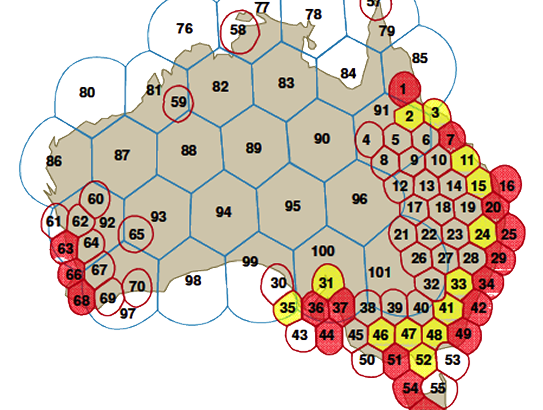HFC installation premium for customers with existing lead-ins amongst changes in latest NBN product roadmap
The company responsible for building the National Broadband Network, nbn, has updated its product roadmap for the third quarter of 2016. Here is a summary of some of the key changes:
HFC product
nbn’s HFC product launched at the end of last month in a limited footprint in Redcliffe region in Queensland (PR044). The company also recently signed a contract with six delivery partners to upgrade and rollout the existing Telstra HFC footprint for nbn’s use.
Self-install to become default
As part of the current rollout strategy, nbn will send an installer to install the HFC Network Termination Device (NTD) at the customer’s premises when a service is ordered. However, the company plans to implement an RSP install and customer install option by the end of first and second quarter of 2017 respectively (PR112, PR129).
Once this process is implemented, nbn will begin charging customers who already have an existing lead-in a professional NTD installation a fee if they request for one.
Other HFC planned products
Deployment of DOCSIS 3.1 NTDs remain on-track for upgrade by the end of 2016 (CE045).
nbn also plans to introduce service transfers on HFC by September 2016 (PR121), as well as various diagnostic capabilities for Traffic Class 1 services.
The company does not plan to offer business grade “Traffic Class 2” tiers over HFC until 2018 or beyond (PR118).
NBN Satellite Service
ISS migration period extended
The migration of nbn’s existing Interim Satellite Service (ISS) customers to the new “Sky Muster” Long Term Satellite (LTS) service has been extended out until February 2017 (PR023). nbn had originally planned to migrate all its existing ISS customers to the Long Term Satellite solution by the end of 2016.
However, teething issues appeared to have hampered the originally anticipated activation rate — shifting the expected end date for the migration by two months.
There have been numerous reports of missed appointments, inability for NBN NTD modems to reconnect after a power reboot and most recently, the decision to retain the existing ISS satellite service after an LTS installation and retrospectively visit the customer to remove the ISS dish.
Consultation on “Managed Services Education” over Satellite
nbn is investigating the possibility of providing enhanced services for distance education students. The company has listed a number of possible products including a managed unmetered data service and multicast video broadcast services over its LTS service. Consultation on this service is expected to begin in September 2017.
Consultation on “Satellite Mobility” which could enable services like on-board Wi-Fi or Internet access for emergency services in remote areas has also been pushed back slightly to September (PR123).
Cell Site Access Service
As reported earlier, nbn concluded its initial Cell Access trial and has begun offering a Cell Site Access Service (CSAS) test service in Beaudesert, Queensland (PR039).
